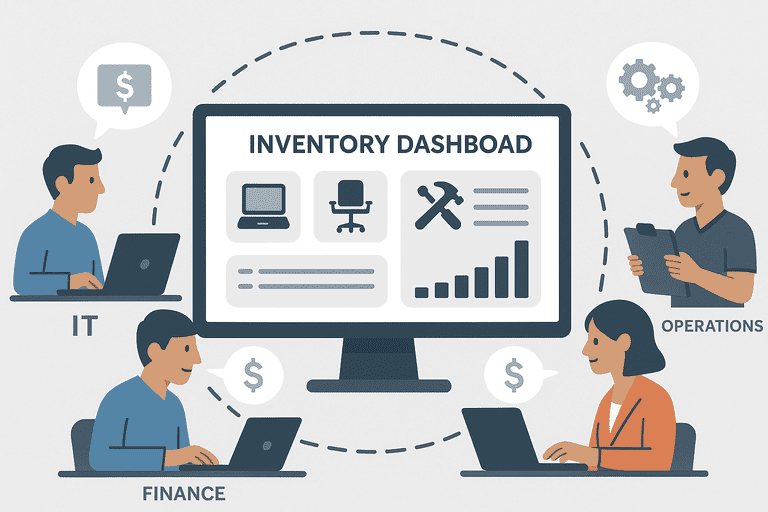How Inventory Transparency Improves Cross-Team Collaboration
Learn how inventory transparency boosts collaboration between teams, reduces conflict, and builds accountability across your organization.

Introduction
Ever heard this in your office?
“Who’s using the projector again?”
“We’re out of cables — didn’t IT just order a box?”
“That laptop disappeared weeks ago.”
When teams lack visibility into shared resources, frustration builds and productivity drops.
Inventory transparency — knowing what assets exist, where they are, and who’s using them — turns chaos into coordination.
It’s not just a feature of asset tracking; it’s a foundation of cross-team collaboration.
1. What Is Inventory Transparency?
Inventory transparency means that everyone — from operations to finance to IT — can access the same, accurate information about assets.
That includes:
- What equipment exists and its current condition
- Who is using or responsible for it
- Where it’s physically located
- When it was last checked or serviced
With tools like InvyMate, this visibility is instant — no emails, no spreadsheets, no chasing down departments.
2. The Problem with Siloed Inventory Management
When each department manages its own lists, problems multiply:
- Duplicated purchases because teams can’t see existing stock
- Blame games over missing equipment
- Misaligned budgets when finance lacks up-to-date asset data
- Downtime when no one knows who holds key equipment
These silos create friction and slow collaboration — especially in hybrid or multi-location setups.
3. How Transparency Drives Collaboration
✅ Shared Context
A transparent inventory system gives every team member the same truth:
- Operations can plan maintenance.
- IT knows device assignments.
- Finance tracks depreciation.
- Managers see utilization trends.
When data is shared, discussions shift from “Who took it?” to “How do we optimize it?”
🔄 Real-Time Updates
Cloud-based tools allow updates to sync instantly:
- When IT checks out a laptop, HR sees it too.
- When facilities mark an item under repair, others stop reserving it.
- When finance exports reports, they reflect the latest changes.
This creates continuous collaboration — without meetings or bottlenecks.
🧭 Accountability and Ownership
Every item in your inventory has a digital “owner.”
This clarity builds trust:
- No confusion about responsibilities.
- Easier audits and smoother handovers.
- Fewer disputes during performance or budget reviews.
Transparent ownership = collaborative responsibility.
4. Transparency Strengthens Culture, Not Just Processes
Transparency builds more than operational efficiency — it builds a culture of trust.
When teams have open visibility:
- People are less territorial with resources.
- Communication improves across departments.
- Everyone feels part of the same ecosystem — not competing silos.
In a world where remote and hybrid work are the norm, this visibility is what keeps organizations aligned.
5. Tools That Make It Happen
Modern inventory systems like InvyMate enable collaboration through:
- Shared dashboards accessible to multiple departments
- Role-based permissions to maintain data security
- QR code tagging for quick mobile visibility
- Audit logs and analytics for accountability
With these features, everyone contributes — without compromising control or security.
Conclusion
Inventory transparency bridges the gap between departments.
When everyone has access to the same, reliable data:
- Duplication disappears
- Collaboration improves
- Trust grows across the organization
Transparency transforms asset tracking from an admin task into a collaboration tool — making every team part of the same conversation.
👉 Bring transparency to your workplace.
Start using InvyMate to give your entire organization a single, trusted source of truth for every asset.